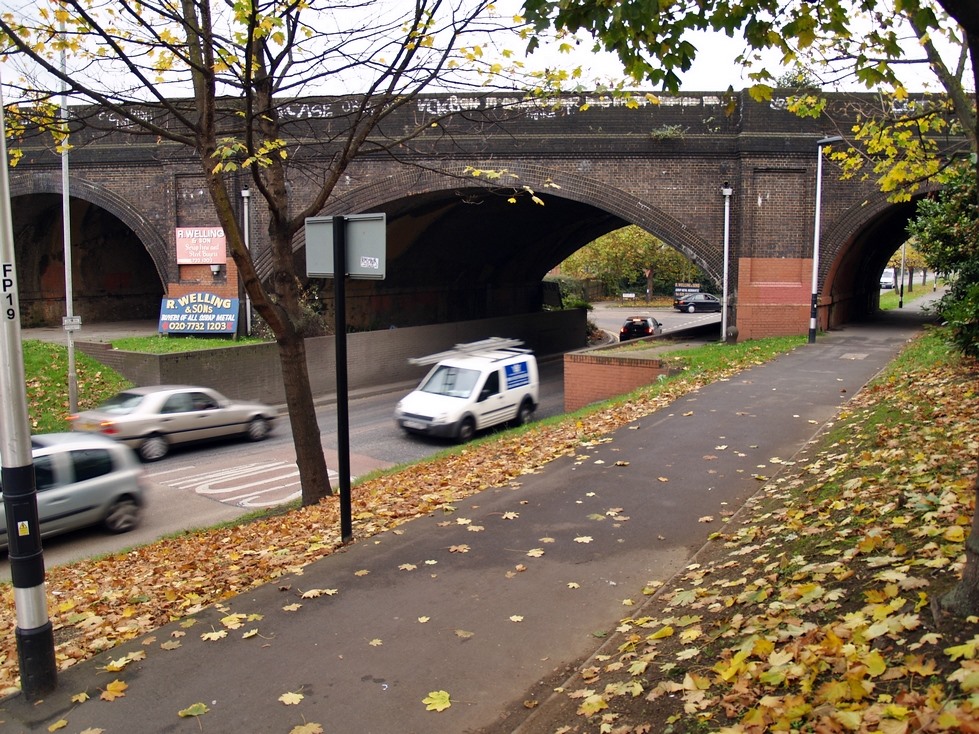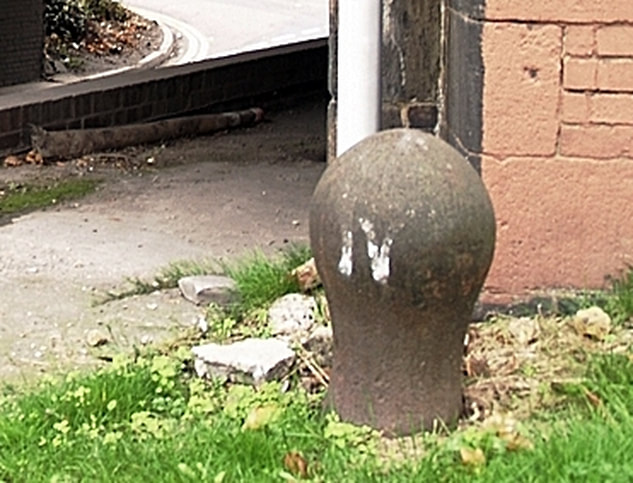London's Lost Canals - Grand Surrey Canal
The route was from Camberwell to Rotherhithe where it joined the Thames. The Croydon Canal joined the Grand Surrey at a junction in New Cross. The Grand Surrey also had a short branch to Peckham.
Walk the route of the Grand Surrey Canal and some other lost canals and rivers of London with Paul Talling, author of this website and the book London's Lost Rivers (published by Penguin Random House). All of Paul's guided walking tours from 2013 to 2020 sold-out weeks in advance. Click Here
The Grand Surrey Canal Act was passed in 1801, authorising a canal through South London from Rotherhithe to Epsom & possibly an extension to Portsmouth. After a few financial problems the Rotherhithe dockland end opened in 1807 and got as far as Camberwell in 1809 but was never built any further. The Peckham branch opened later in 1826. The Rotherhithe end of the canal saw many changes, as the docks there developed. At first, the canal went through Russia Dock & Stave Dock, which was connected to the Thames by a lock. Leading up to the canal’s demise the entrance to the Thames was via Greenland Dock.
The canal became a hub of industry with horse-drawn barges bringing timber for the construction industry and limestone to be made into cement. Sawmills and lime kilns sprang up on its banks as a result. The canal authorities generated income from tolls and fishing licences. In Victorian times a local pub hired rowing boats while swimming and illegal dog racing along the towpath drew small crowds and the attention of the law. The Grand Surrey Canal was the first to have canal police (forerunners of the British Transport Police). "Bank Rangers" were appointed in 1811 to keep law and order along the length of the canal.
The canal began to decline in the 1940s when part of it was abandoned & In 1960, much of it was drained, and in 1970 the dock was closed. In 1974, the remainder of the canal was finally drained to eliminate the danger of people falling in and drowning. A local paper in the early 1970s wrote: “It’s waters are polluted and filled with rubbish and hunks of wood….to many people it is just 3 miles of stinking water which has to be dredged every time a child goes missing”
Burgess Park is now sited on the former Camberwell Basin and at Peckham, the canal head became the site of today's Peckham Square. Burgess Park surprises many people that it is a recent green space & only acquiring its present name in 1974. For most of the nineteenth century this vast area was covered with houses, streets and industrial buildings. In 1943, the houses were demolished and people moved on to new estates.
Out of all the waterways in this book this is the one that is the most rewarding as there are plenty of relics of the old canal including many of the old bridges, a lime kiln and timber merchants still exist along the route of the canal, reminding us of their canal origins. Whitten Timber merchants remains trading behind Peckham Square and their shop displays old black and white pictures of the working canal.
See the route of the Grand Surrey Canal and some lost rivers of London for yourself with Paul Talling, author of this website and the book London's Lost Rivers (published by Penguin Random House). All of Paul's guided walking tours between 2013 and 2020 sold-out weeks in advance. Click Here for details of walks.
Walk the route of the Grand Surrey Canal and some other lost canals and rivers of London with Paul Talling, author of this website and the book London's Lost Rivers (published by Penguin Random House). All of Paul's guided walking tours from 2013 to 2020 sold-out weeks in advance. Click Here
The Grand Surrey Canal Act was passed in 1801, authorising a canal through South London from Rotherhithe to Epsom & possibly an extension to Portsmouth. After a few financial problems the Rotherhithe dockland end opened in 1807 and got as far as Camberwell in 1809 but was never built any further. The Peckham branch opened later in 1826. The Rotherhithe end of the canal saw many changes, as the docks there developed. At first, the canal went through Russia Dock & Stave Dock, which was connected to the Thames by a lock. Leading up to the canal’s demise the entrance to the Thames was via Greenland Dock.
The canal became a hub of industry with horse-drawn barges bringing timber for the construction industry and limestone to be made into cement. Sawmills and lime kilns sprang up on its banks as a result. The canal authorities generated income from tolls and fishing licences. In Victorian times a local pub hired rowing boats while swimming and illegal dog racing along the towpath drew small crowds and the attention of the law. The Grand Surrey Canal was the first to have canal police (forerunners of the British Transport Police). "Bank Rangers" were appointed in 1811 to keep law and order along the length of the canal.
The canal began to decline in the 1940s when part of it was abandoned & In 1960, much of it was drained, and in 1970 the dock was closed. In 1974, the remainder of the canal was finally drained to eliminate the danger of people falling in and drowning. A local paper in the early 1970s wrote: “It’s waters are polluted and filled with rubbish and hunks of wood….to many people it is just 3 miles of stinking water which has to be dredged every time a child goes missing”
Burgess Park is now sited on the former Camberwell Basin and at Peckham, the canal head became the site of today's Peckham Square. Burgess Park surprises many people that it is a recent green space & only acquiring its present name in 1974. For most of the nineteenth century this vast area was covered with houses, streets and industrial buildings. In 1943, the houses were demolished and people moved on to new estates.
Out of all the waterways in this book this is the one that is the most rewarding as there are plenty of relics of the old canal including many of the old bridges, a lime kiln and timber merchants still exist along the route of the canal, reminding us of their canal origins. Whitten Timber merchants remains trading behind Peckham Square and their shop displays old black and white pictures of the working canal.
See the route of the Grand Surrey Canal and some lost rivers of London for yourself with Paul Talling, author of this website and the book London's Lost Rivers (published by Penguin Random House). All of Paul's guided walking tours between 2013 and 2020 sold-out weeks in advance. Click Here for details of walks.




